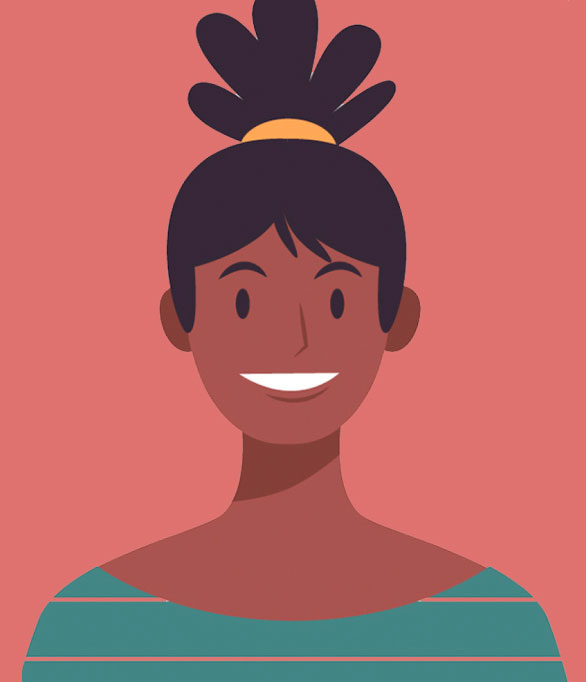This week, Jill answers a listener question about how long it takes for kidney stones to form.
Jeff Sarris: Welcome back to the Kidney Stone Diet podcast, the show about reducing your kidney stone risk and living your best life. I’m your host and fellow student, Jeff Sarris.
Jill Harris: And I’m Jill Harris, your kidney stone prevention nurse. Now, because I live in such a small apartment, it’s a very skinny tree. Now, last year, I had a fuller tree. But this year, I’ve got a fake tree. I don’t know what to ask. I’m just talking about the tree. So I’m not thrilled with it, but I’m going to live with it. It’s not my favorite, but the ornaments–so, you know, every year, which a lot of people do whatever, it has been a big deal in my son’s life, I gave him an ornament that reminds us of what he did, whether it’s starting weightlifting or learning how to play guitar this year. He doesn’t watch my show, he would be like, mortified, if he doesn’t watch the show. But so this year, it will be a thin ornament, a new new dog ornament, because oh my god, he loves him so much, which is so awesome. So every time we put up the tree and put all the ornaments on it’s just like, “Oh, remember this Thomas the Train? Remember this? Star Wars, remember this? Lightsabers, you know all of his favorite things. So, I love it so much. What’s your tradition for Christmas? Do you put up a tree or what do you do?
Jeff Sarris: So, years ago, I had just like a fake tree, but I ended up getting this–I don’t even know how to describe it–it’s a tree. It was originally from Target. It came in a little box and it just had almost just like shiny–think of it almost like a slinky of sorts, where the inside is small and you pull the whole thing up and it becomes a tree. But it doesn’t look like a normal tree at all. It’s just like shiny paper sort of–
Jill Harris: That’s so you by the way.
Jeff Sarris: And I put lights on the inside and it looked cool. So now we have a few of those, but, just yesterday, we were thinking about maybe getting a small tree, not dissimilar from what you have, actually. Like narrow that would fit in with the room and whatnot, so it’s sort of funny that you have a small one this year.
Jill Harris: Yeah, I have a small one this year. It’s fine. This is a very small apartment, but I can actually go a little fuller at the base. But it’s fine. It’s not the tree, anyway, it’s the ornaments that I love. So I love Christmas. I grew up with wonderful Christmases. I love the lights. I love shopping. I love all of it. I love everything that has to do with Christmas. It makes me very happy. Charlie Brown music, Christmas carols, all of it. So I’m very happy. And then, you know, come January 1, not so happy, though. Like February and March, drones on and on. But I’m very excited for Christmas.
Jeff Sarris: For sure. So should we dive into this week’s question?
Jill Harris: Yup, let’s go!
Listener Voicemail: Good morning, Jill and Jeff. It’s Alan, again, from Indiana. I have a quick question. So I know kidney stones can take years to develop or come about in our body, but what is–because I know sometimes people can develop kidney stones in a few months, sometimes six months, maybe less? I’m not really sure. I was just looking at the information and some of which is just kind of conflicting. I know it’s based on how we eat because it’s diet, diet diet. But just what would be a general timeframe to just put into consideration? So that is all I wanted to know. Thank you so much.
New Stone Formation Depends on a lot of Factors!
Jill Harris: Alan, Alan Alan from Indiana, okay. So I have known some patients, they form a stone, and they’ve said, “Jill, I had a lithotripsy in September or a ureteroscopy and the doctor says I have a new stone now and it’s November. How in God’s name did I make new stone in this short of a time?” I’m a nurse, so I don’t override any doctor’s orders, but I always tell patients, “Well, you might want to ask the doctor. Could it be possible that this was a fragment leftover from the original surgery?” Could be and the doctors will say I got everything, but lots of times a little piece gets stuck. I mean, it’s not that like they’re lying to you. They they see the imaging when they’re in there and they said they got everything because they think they did.
But, sometimes, there’s something leftover. It is very unlikely that a patient is going to form a stone in a month. It just is. It could take several months, years, and so it’s different for everybody. Some people have medical conditions. They have colitis–these are bowel disease patients–colitis, they have Crohn’s, they have a gastric bypass. So, they have malabsorption issues. They have a parathyroid issue. They’ve been sick, they’ve been on certain medications they’ve been what else? They’re training for a marathon, so they’ve been grossly dehydrated for many months. There are so many different reasons and different scenarios, and why people will make stones quicker than others.
It depends on lifestyle, for sure. It also depends on medical conditions and, you know, the malabsorption issues are a real thing, too. So, a lot of patients will come to me and they’ll say, “Well, I have ulcerative colitis, or I have Crohn’s disease.” And these patients typically have a lot of diarrhea. And so a lot of people will say, “Well, you have diarrhea, so you better be drinking more to make up for being constantly dehydrated.” But those patients, when they drink more, they’ll have more diarrhea. So it’s not just a clear kind of treatment plan for somebody who has consistent diarrhea because that can make the matters worse, and instead of peeing, it’s coming out the other end, so they’re even more dehydrated.
Here’s How Long it Takes to Form a Stone
So there’s many different things. I would say on the average, you know, it takes six months and longer to make a kidney stone. Here’s the averages, though, so people could feel a little less anxious. Averages, based upon research, from your first stone to your second stone, between eight and 12 years can go by. That’s a lot. So, let’s just say on the average 10 years. If you make that stone, if you make a second stone, 50% of those people will make a third stone within a couple of years and then you become a chronic stone former. So, you have to get on a treatment plan. A treatment plan is always going to start with a urine collection.
And I know my patients, and students, and members of the Facebook group, and probably here on YouTube, get sick of me talking about urine collections. But you cannot figure out why you’re forming a stone unless you do one. People will say, “Jill, I watched my salt, my sugar. I’m doing everything right. I’m still making stones.” “Have you done a urine collection?” “No.” “Well, you say you’re doing everything you’re supposed to, but is your salt and sugar where you need it to be? Is your protein where it needs to be? Many people what they think they’re doing is not really what they’re doing.
Just because you stopped using the salt shaker doesn’t mean you’re eating a low salt diet. I get patients like this all the time. They’re eating 10,000 milligrams of sodium a day. So, when the doctor just generically tells them lower your sodium, they’re lowering it to 8,000. Well, that’s still a really high salt diet when we want you to get to 1,500 milligrams a day, right? So, these things should be tracked and a urine collection is going to tell you where you need to go. Also, there are medical conditions, like I just said, that can create stones. So you need to start ruling things out. A urine collection will tell you the first, primary things you need to know, so then you can base the treatment plan upon that. Yes, it will always be diet. That’s always there, but sometimes there’s medications.
Sometimes there’s other medical conditions going on that you will need a surgery to take care of. Think hyperparathyroidism, where your parathyroid glands are secreting too much calcium. That excess calcium is being dumped in your urine and if you don’t pee a lot, that calcium’s sitting in there and oxalate and phosphate, other salts are looking for calcium to bind with and form stones. So, it’s complicated. Even though I make this fun and talk about it in a very practical way, reading urine collection reports is extremely complicated. There’s many different ways, if this is a “yes,” then go here. If it’s a “no,” then go here. It’s a big flowchart and there’s many different things to rule out and talk about.
Also that consult with me is very valuable because I can have you understand what your report means so you can talk to your doctor about it and have a really great doctor appointment. When you get a good doctor appointment, then you can get on the right treatment plan and that’s super important. When you are given the right treatment plan, which will always include diet, you can expect an 80%, up to 80% reduction in new stone formation. That’s huge. Most of my patients never get another stone again and it’s not just because of me. They’re getting information from me, but then they’re putting that information to work. They just don’t take the information and do nothing with it.
Information means nothing. Education means nothing, unless you’re willing and ready to take some action. That’s when things start happening. So it can take quite a while for a stone to form on average. And some people, because of other things going on that you won’t know because you haven’t done a urine collection, can be a lot more frequent. So I beg of you, guys, please tell–”My doctor said he don’t want to do it.” This is what you say, “Dear Doctor, I would like a urine collection because I want to do everything in my power never to form another stone again and I know the urine collection is going to be key in trying to figure out why I’m forming stones. Please order me one.” That’s what you say.
There’s many reasons doctors don’t. Lots of doctors don’t know what to do with the report once they get it. Lots of doctors will say, you know, “My patients don’t change anyway, what’s the point in putting them through that?” And they’re not wrong otherwise, I would have retired decades ago because I’d have so many patients, I wouldn’t know what to do it. Most people don’t want to change their diet, folks. If you’re listening, it’s because you’re motivated never to get another stone again. You care about that. I’m not saying other people don’t, but they’ll take their chances because doing the diet is too hard. They’d rather eat, you know, Little Debbie snack cakes instead.
So if you’re willing to take that chance you are. That’s your choice. Everyone here is grown. But those who succeed with me are because they’re highly motivated never to make another stone again. So they work. They take the information and they do something with it, but it starts with a urine collection, I cannot be more passionate about that and I’m very passionate about it because so many people don’t get that ordered. They don’t know to get it ordered and their doctor didn’t offer it for many different reasons. But I beg of you to please get that done.
And guess what? If your urologist does not want to do it, your primary doctor can do it. Any doctor can order you that. They may not know what to do with the results and that’s why you go to kidneystonediet.com to order that service, and then you can have a good doctor appointment once you get all the information. But the general timeframe can vary from months to years. It just depends on what a patient is doing, what kind of medical conditions are going on, so it varies. So, there you go. That’s my take on that. Thanks, Alan!
Yeah, and that’s wild, too, because once once you realize that–it’s easy to be like, “Oh, what I’m doing is fine. It’s working, whatever.” But knowing that this compounds over a very long time, potentially, so it’s not just it’s not an overnight like I’m I’m doing doing well right now. It’s like you don’t know exactly even where you are necessarily, if you haven’t been–
Yes! And this is why, yes, and this is why it’s so important to get the first urine collection. You go over the reports with the doctor, get on your treatment plan, rule other things out. You do a follow-up in a couple of months to make sure that the changes you’re making is having the desired effect. And then you do an annual urine collection because, just like Jeff said, over time, people think that got it going on. That pain, that memory of that pain gets further and further away as the years go on. I can’t tell you when patients come to me they’ll say, “Jill, I got another stone.” “What? Let me see your–what’s your annual?” “Well, Jill, I didn’t do it for the last three years because I thought I was doing okay. “
People, don’t wind up in that bucket. These stones are very preventable, very preventable, but you must use your accountability tools and that will be getting an annual urine collection every year. Don’t be expecting no card in the mail mail like the dentist sends you to get your teeth cleaning. Urologists are not going to do that. There are a few out there that will say it’s time for your annual when they see you in the office, but most of the time, guys, you’re going to have to ask for that.
Then you’ll get your results and you’ll be like, “Oh shit! I thought I was doing the low salt diet, but look at this, Mabel. It went up! Oh my god, I gotta get back on track.” That’s how you don’t get a new stone. So, that’s super important.
Old lady here, of course. I thought I had my “Do Not Disturb” on and of course I got a phone call and then I went to end that phone call and accepted it because I’m 60. What are you gonna do?
Jeff Sarris: Nothing wrong with that! It’s just the importance of the yearly urine collections and staying on top of things, but I think you’re really covered at all. It is such an important part and something that people need to remember because we’re not going to get those little postcards in the mail saying it, for example. I think that’s actually a great note–despite the technical difficulties–I think it’s a great spot to wrap right here.
So if you have a question that you would like us to answer on a future episode, the number is 773-789-8763. And we will feature your voice in the future. And if you want to dive deeper, head over to kidneystonediet.com, where you can sign up for the weekly email newsletter. Jill sends it out every Saturday to keep you on track. You can find the Kidney Stone Diet meal plans, prevention course, accountability group, everything over there, plus the prevention group on Facebook, which is hugely beneficial across the board. I think with that we will wrap for this week. What do we have there? Jill has a little “Subscribe” note up there. There we go. Zoomed in a little bit for you. But yeah–
Jill Harris: Subscribe, please! Press that button. Press that button, please! It helps us. I’m begging. I don’t even have pride anymore. Please press that subscribe button. It really helps us a lot. And and like the video and comment, too, because we’re creating a community here. We’ve been getting a lot of comments lately. So I’m always busy answering those comments. It’s so exciting. I love it.
Jeff Sarris: It’s awesome! But yeah, thanks again for tuning in and we will see you next time!
Jill Harris: Bye, guys!














Leave a Reply